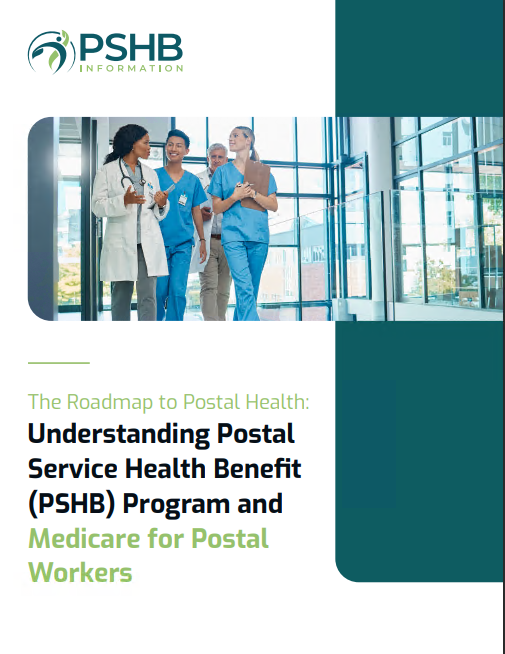Key Takeaways
- Postal workers and retirees will experience a major shift as they transition from the Federal Employees Health Benefits (FEHB) program to the Postal Service Health Benefits (PSHB) program in 2025.
- Understanding the PSHB system, including its impacts and advantages, will be critical for postal employees and retirees as they prepare for this change.
A Whole New Health Benefits System for Postal Workers—The Big Switch from FEHB to PSHB Explained Before the 2025 Rollout
The U.S. Postal Service is undergoing a significant transformation in its
healthcare benefits system. Starting in 2025, postal workers and retirees will transition from the
Federal Employees Health Benefits (FEHB) program to the newly created Postal Service Health Benefits (PSHB) program. This change aims to provide more tailored health benefits for postal workers while ensuring a sustainable model for the future. With the rollout approaching, it’s essential for postal employees and retirees to understand the details of this shift and what it means for their health coverage.
What is the PSHB Program?
The PSHB program is a new health benefits system exclusively designed for postal workers and retirees. It will operate separately from the
FEHB program but will maintain many of its core features. The PSHB program was established as part of the Postal Service Reform Act of 2022 to address rising healthcare costs and ensure long-term sustainability for postal employees’ health coverage. This change affects approximately 1.7 million postal workers and retirees, making it crucial for all affected individuals to become familiar with the new system.
Why is the Transition Happening?
The
transition from FEHB to PSHB was driven by the need to stabilize the Postal Service’s finances. For years, the Postal Service faced financial challenges partly due to the rising costs associated with health benefits under the FEHB program. The new PSHB program aims to streamline these benefits and provide a more sustainable solution by separating postal workers from other federal employees in the health benefits system.
This change also aligns with broader efforts to modernize the Postal Service’s operations and finances. The separation allows for greater control over costs and ensures that postal workers have access to health plans tailored specifically to their needs.
Who Will Be Affected by the Switch?
The switch to PSHB will impact all current postal workers, retirees, and their dependents who are currently covered under the FEHB program. Starting in 2025, anyone employed by the U.S. Postal Service or those who have retired from the organization must transition to the PSHB program to maintain their health benefits.
Postal employees nearing retirement should pay close attention to the rollout timeline and requirements, as they will need to select new plans under the PSHB system. It’s also important for current retirees to understand how their benefits will be transferred to the new program to avoid any disruption in coverage.
How Will the PSHB Program Be Different from FEHB?
The PSHB program will share similarities with the FEHB in terms of plan structure and the availability of multiple options. However, there are several key differences:
- Exclusive Coverage for Postal Workers: Unlike the FEHB program, which covers federal employees from various agencies, the PSHB is tailored exclusively for postal employees and retirees. This specialization allows for the creation of plans that better meet the unique needs of the postal workforce.
- Separate Risk Pool: By moving postal workers into their own risk pool, the PSHB program aims to manage costs more effectively. This means that the health insurance plans offered under PSHB may have different premiums and coverage options compared to those available under FEHB.
- Medicare Integration for Retirees: One significant aspect of the PSHB program is its integration with Medicare for eligible retirees. Retirees aged 65 or older will be required to enroll in Medicare Part A and Part B to qualify for PSHB coverage. This integration is intended to reduce overall costs for both retirees and the Postal Service by leveraging Medicare’s existing infrastructure.
What Do Postal Workers Need to Do to Prepare?
Preparing for the transition from FEHB to PSHB involves several steps:
- Stay Informed: Postal employees and retirees should stay up-to-date with announcements from the U.S. Postal Service and the Office of Personnel Management (OPM) regarding the PSHB rollout. These organizations will provide information about enrollment periods, plan options, and requirements for transitioning.
- Evaluate Health Needs: As the PSHB program will offer different plans, it’s important for postal employees and retirees to evaluate their own and their dependents’ health needs. This evaluation will help them choose the most suitable plan when the time comes.
- Enroll in Medicare (if applicable): Retirees aged 65 and older must enroll in Medicare Parts A and B as part of their PSHB plan requirements. Ensuring Medicare enrollment is completed in advance will be critical to maintaining uninterrupted health coverage.
For postal retirees, the integration of Medicare into the PSHB system is a central component of the new program. Those who are Medicare-eligible (65 and older) must enroll in Medicare Parts A and B to qualify for PSHB coverage. This requirement means that postal retirees will rely on a combination of Medicare and PSHB benefits, similar to other retirees who use federal health benefits.
Medicare integration is expected to help reduce overall healthcare costs for retirees while providing
comprehensive coverage. By enrolling in Medicare, retirees will have their primary healthcare needs covered through Medicare, while the PSHB plans will serve as supplementary coverage to handle additional costs not covered by Medicare.
What Are the Benefits of the PSHB System?
The PSHB system is designed to offer several benefits over the existing FEHB program, including:
- More Tailored Plans: The PSHB program will have plans specifically designed for postal workers and retirees, potentially offering more relevant benefits and coverage options.
- Cost Control: By creating a separate risk pool, the PSHB program aims to manage healthcare costs more efficiently, which could lead to more stable premiums over time.
- Medicare Coordination: For retirees, the integration with Medicare will provide a cohesive approach to healthcare coverage, reducing the need for duplicate services and improving overall care coordination.
Common Concerns and Misconceptions About the Switch
While the shift to the PSHB program aims to enhance benefits and control costs, it is natural for postal workers and retirees to have concerns. Here are some common misconceptions and clarifications:
- “I Will Lose My Current Coverage”: While the transition does require postal employees and retirees to move from FEHB to PSHB, it does not mean losing coverage. The new program is structured to provide continuity, and all postal workers will have access to health plans under PSHB.
- “The Costs Will Be Higher”: Although the exact costs of PSHB plans are still being determined, the program’s design focuses on controlling costs through a separate risk pool and Medicare integration. This may help stabilize premium rates over time.
- “Medicare Enrollment is Complicated”: Retirees concerned about Medicare enrollment can take comfort in knowing that the U.S. Postal Service will provide assistance and resources to ensure a smooth transition. It’s essential to stay informed and follow the guidance provided by the Postal Service and OPM.
Preparing for the 2025 Rollout: What’s Next?
With the rollout of the PSHB program slated for 2025, postal workers and retirees should begin preparing now to ensure a smooth transition. Key actions include staying informed about enrollment periods, understanding the requirements for Medicare enrollment, and assessing health coverage needs. Postal employees should also pay attention to official communications for updates and detailed instructions on the next steps.
The transition to PSHB represents a significant change, but with proper preparation, postal workers and retirees can navigate this shift effectively, ensuring that they maintain the health coverage they need.
Navigating the Future with PSHB
The switch from FEHB to PSHB is a major milestone for the Postal Service and its workforce. As 2025 approaches, it’s important for postal workers and retirees to take proactive steps to understand the new system, evaluate their health needs, and enroll in Medicare if applicable. With the right preparation and information, postal employees and retirees can look forward to a health benefits system designed with their specific needs in mind.






